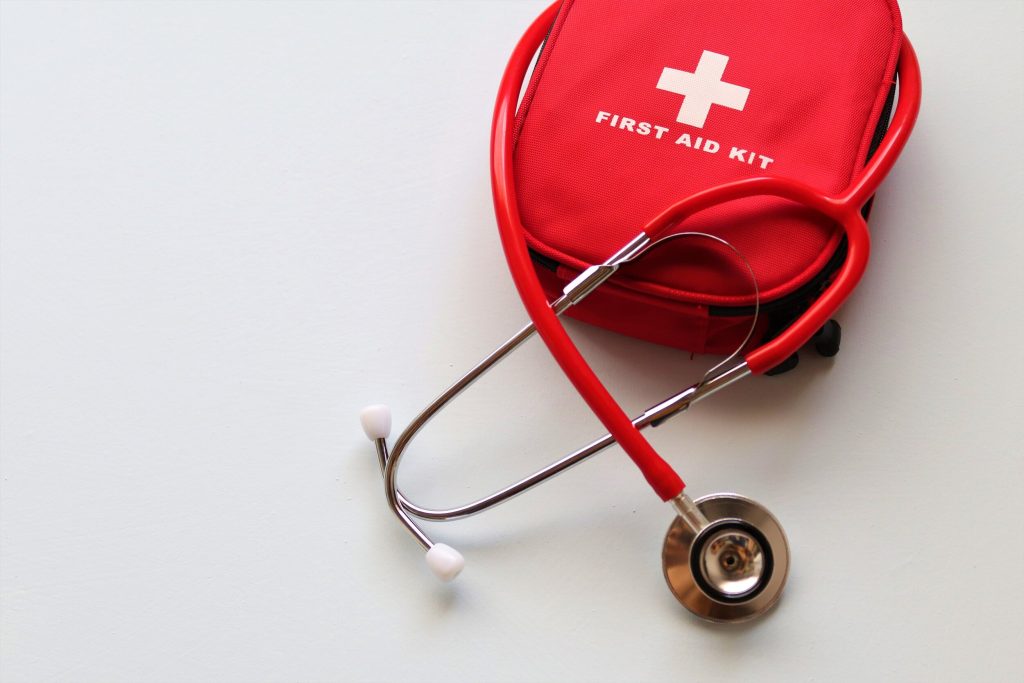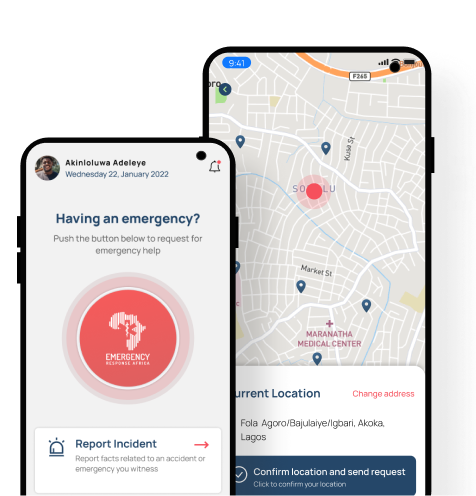Emergencies don’t always wait for doctors or ambulances, they’re often sudden and unexpected. In those first few minutes before medical help arrives, a first aider can make a real difference.
A first aider is someone trained to give immediate care to a person who is injured or suddenly ill. Whether it’s helping a choking child, giving CPR, or treating a bleeding wound, first aiders save lives every day.
In 2025, with more people becoming aware of health and safety, first aid training is gaining momentum. This article explains who a first aider is and how you can become one in Nigeria this year.
Who is a First Aider?
A first aider is a trained individual who provides immediate care to an injured or ill person before professional medical help arrives. Their role is to stabilize the situation, prevent further harm, and offer basic medical assistance.
First aiders are essential in workplaces, schools, homes, and public spaces. They handle cuts, burns, fractures, and even life-threatening emergencies like cardiac arrest. In many countries, organizations are required by law to have trained first aiders on-site.
Anyone can become a first aider with the right training, making it a valuable skill for personal and professional life.
Key Responsibilities of a First Aider
A first aider is supposed to take basic action in helping someone who is injured or sick before professional help arrives. Here’s what a first aider should do:
- A first aider quickly evaluates the scene to identify dangers and prevent further injuries.
- They provide immediate first aid care for wounds, burns, fractures, and other medical conditions before medical professionals arrive.
- They assess the victim’s condition by checking vital signs like breathing and consciousness.
- They perform life-saving techniques such as CPR or choking relief when necessary.
- They keep the injured person calm and offer reassurance to reduce panic and stress.
- They ensure proper positioning of the victim to prevent worsening injuries.
- They communicate essential details to emergency responders for effective treatment.
- If required, an ambulance or any professional aid is summoned, and the first aider accompanies the person until the professional aid arrives.
- They maintain a well-stocked first aid kit and stay updated on new first aid techniques.
What Skills Must a First Aider Possess?
Apart from medical knowledge, being a good first aider also requires certain personal qualities:
- Communication: You need to talk clearly with the injured person, bystanders, and emergency services. This helps calm the situation and ensures that everyone knows what’s happening.
- Problem-Solving: Emergencies can be unpredictable, so first-aiders need to think on their feet and quickly figure out the best course of action.
- Calm under Pressure: Emergencies can be chaotic. A good first aider stays composed, thinks clearly, and avoids panic.
- Attention to Detail: Small details can be critical in first aid, such as checking for signs of shock or correctly positioning someone’s body.
- Awareness of Personal Safety: They protect themselves while helping others—using gloves, staying alert, and avoiding risky environments.
Types of First Aiders
There are different types of first aiders based on the training they receive and the emergencies they are prepared to handle:
1. Emergency First Aider
Trained through a one-day Emergency First Aid at Work (EFAW) course, this person is equipped to respond to common, life-threatening situations such as choking, bleeding, or unconsciousness. They are often found in offices, public spaces, and small businesses.
2. First Aider at Work
This individual has completed a three-day First Aid at Work (FAW) course and is trained to handle a wider range of emergencies, including fractures, burns, allergic reactions, and more complex health incidents. They are commonly placed in larger workplaces or high-risk environments.
3. Paediatric First Aider
Specifically trained to provide first aid for children and infants, paediatric first aiders are often found in schools, daycares, or households with young children.
4. Mental Health First Aider
Trained to support people going through emotional or psychological crises. They are not therapists but are equipped to offer early support, listen, and refer individuals to the right help.
Note: There’s a first aid personnel known as the Appointed Person. They are not necessarily trained as first aiders. Their main responsibility is to manage first aid supplies and call for emergency services when needed. They do not provide medical care but play a supporting role by ensuring the first aid kit is stocked and help is contacted quickly during an emergency.
How to Become a First Aider in 2025
Becoming a first aider is one of the most practical and empowering skills you can develop. In 2025, there are more accessible training options across Nigeria, making it easier for anyone to get certified. Below are six key steps to help you get started and become a confident, certified first aider.
1. Decide the Type of First Aid Course You Want to Take
Before enrolling, choose a course that fits your needs or environment. Some common options include:
- Emergency First Aid at Work (EFAW) for basic workplace situations,
- First Aid at Work (FAW) for more in-depth training,
- Paediatric First Aid if you work with children, and
- Mental Health First Aid for emotional and psychological support.
2. Find a Certified Training Provider
Next, register with a recognized organization that offers certified first aid training in Nigeria. Trusted options include the Emergency Response Africa (ERA), Nigerian Red Cross Society, the Federal Road Safety Corps (FRSC), and some private hospitals or health-focused NGOs. Always confirm that the provider issues a valid certificate accepted by employers and regulatory bodies.
3. Attend Practical Training Sessions
Once enrolled, you’ll participate in hands-on sessions where you’ll learn how to manage real emergencies. This includes treating cuts and burns, performing CPR, handling choking, applying bandages, managing fractures, and using personal protective equipment (PPE). Instructors use simple language and real-life examples to ensure you understand each skill.
4. Complete All Course Requirements
To become certified, you must attend all training sessions and pass the assessments. These usually include a practical demonstration of your skills and a short written or verbal test. Trainers may assess how well you perform CPR, handle bleeding, or respond to a seizure, depending on the course type.
5. Get Your Certification
After successfully completing the course, you’ll receive a first aid certificate. This document confirms that you’re trained to provide emergency care and is usually valid for 2 to 3 years. You can now serve as a first aider at work, in schools, during events, or within your local community.
6. Stay Updated and Renew Your Skills
First aid knowledge needs to be refreshed regularly. Make it a habit to renew your certification before it expires and take refresher courses, especially if there are updates in first aid techniques or tools. Some training providers, like ERA, offer continuous learning options and advanced emergency care courses to keep you informed and ready.
Why Nigeria Needs More First Aiders in 2025
In a country like Nigeria, where access to professional emergency services can be delayed due to traffic, location, or limited resources, first aiders fill a critical gap. Whether it’s a road accident, a workplace injury, or a child choking at home, immediate care can prevent a bad situation from becoming worse.
With rising health emergencies, workplace hazards, and an increase in public gatherings, the demand for trained first aiders is higher than ever. Unfortunately, many communities still lack even one person with basic first aid skills.
Having more trained first aiders means more lives can be saved, injuries can be managed better, and emergency teams can work more efficiently when they arrive.
Conclusion
Every home, workplace, and public space deserves someone who can step in during emergencies with confidence and care. While no one hopes to face a crisis, lacking basic first aid knowledge can turn a manageable situation into a life-threatening one.
As individuals, families, or organizations, now is the time to invest in first aid training and ensure someone nearby can provide immediate help when needed.
At Emergency Response Africa, we make it easier to learn these life-saving skills by offering trusted, accessible training across Nigeria. A safer community starts with people who are ready to act.
Be prepared. Get trained. Someone’s life may depend on it.
Frequently Asked Questions About Becoming a First Aider
Do I Need Medical Experience to Become a First Aider?
No. Anyone can become a first aider with the right training. You don’t need to be a doctor or nurse, just willing to learn and act in emergencies.
How Long Does First Aid Training Take?
Basic courses like Emergency First Aid at Work (EFAW) usually take 1 day. More advanced training, like First Aid at Work (FAW), may take up to 3 days.
Is First Aid Certification Valid Everywhere?
Your certificate is usually valid across Nigeria and may be accepted internationally, depending on the training provider. Always confirm with your chosen provider.
Will I Be Legally Responsible If I Give First Aid?
In most cases, if you act in good faith and within your level of training, you are protected. The key is to always follow your training and act safely.
How Do I Renew My First Aid Certification?
Most certificates are valid for 2 to 3 years. You can renew by taking a refresher course from a certified provider like Emergency Response Africa (ERA).



